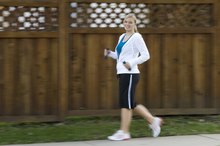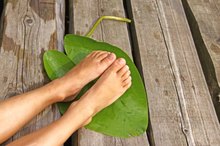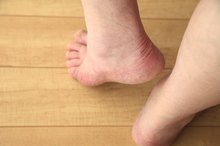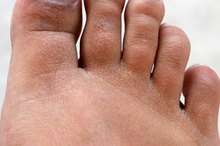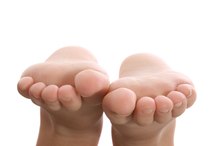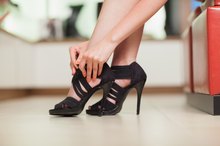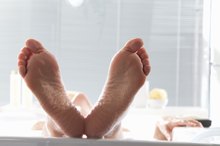The Best Shoes for Obese People
Obesity is defined as having an excessive amount of body fat. The Mayo Clinic says obesity increases your risk of health conditions such as high blood pressure and diabetes.
If you are experiencing serious medical symptoms, seek emergency treatment immediately.
Obesity can cause foot problems or make existing foot issues worse. According to the American College of Foot and Ankle Surgeons (ACFAS), extra pounds put additional stress on your plantar fascia--the band of tissue that extends from the heel of your foot to the toes 12. Plantar fasciitis is an inflammation and irritation of this stretch of tissue that causes heal pain.
The use of proper footwear and/or certain shoe modifications can help relieve the stress placed on your feet when you are carrying excess weight.
Shoe Quality
When shopping for shoes, look for material that is strong but not restrictive. Also select footwear that has a thick sole. Look for shoes with good cushioning and flexibility in front of the shoe that allows your toes to bend back easily. It is beneficial to have your feet professionally measured to ensure a proper fit.
- When shopping for shoes, look for material that is strong but not restrictive.
Arch Support
Shin Stretches for Runners
Learn More
The ACFAS says wearing supportive shoes with a good arch support and a slightly raised heel reduces stress on the plantar fascia. This can relieve some stress on the ligament. Inexpensive arch support inserts that are available over-the-counter lift the tension off your foot tissue and act as shock absorbers.
- The ACFAS says wearing supportive shoes with a good arch support and a slightly raised heel reduces stress on the plantar fascia.
Padding and Strapping
Placing pads in your shoes softens the impact that occurs while walking. The ACFAS also says strapping devices help reduce strain on the fascia. Strapping helps support the foot and reduce strain on the fascia.
Custom Orthotic Devices
Red Bumps on the Big Toe
Learn More
According to ACFAS, custom orthotic devices are made from impressions or images of a patient’s foot by a foot and ankle surgeon 2. They are inserted in supportive shoes to maintain the correct and aligned position of the foot. Custom devices may require adjustment following a break-in period.
Related Articles
References
- American College of Foot and Ankle Surgeons: Foot Pain
- American College of Foot and Ankle Surgeons: Custom Orthotic Devices
- Goff JD, Crawford R. Diagnosis and treatment of plantar fasciitis. Am Fam Physician. 2011;84(6):676-82.
- Lim AT, How CH, Tan B. Management of plantar fasciitis in the outpatient setting. Singapore Med J. 2016;57(4):168-70. doi:10.11622/smedj.2016069
- Rathleff MS, Mølgaard CM, Fredberg U, et al. High-load strength training improves outcome in patients with plantar fasciitis: A randomized controlled trial with 12-month follow-up. Scand J Med Sci Sports. 2015;25(3):e292-300. doi:10.1111/sms.12313
- Tsai C-T, Chang W-D, Lee J-P. Effects of Short-term Treatment with Kinesiotaping for Plantar Fasciitis. Journal of Musculoskeletal Pain. 2010;18(1):71-80. doi:10.3109/10582450903495882
Writer Bio
Karen Hellesvig-Gaskell is a broadcast journalist who began writing professionally in 1980. Her writing focuses on parenting and health, and has appeared in “Spirituality & Health Magazine" and “Essential Wellness.” Hellesvig-Gaskell has worked with autistic children at the Fraser School in Minneapolis and as a child care assistant for toddlers and preschoolers at the International School of Minnesota, Eden Prairie.
